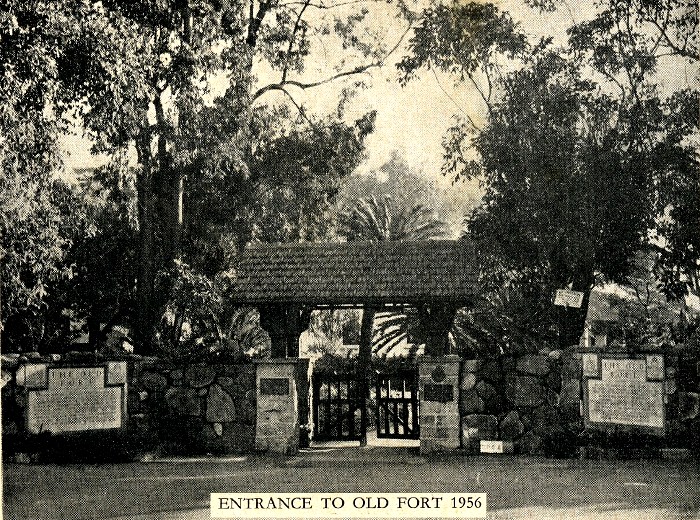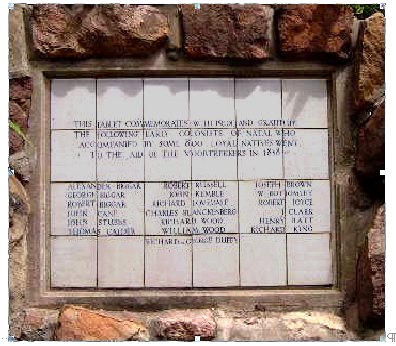OLD FORT ROAD runs from Umgeni Road to the Beach front known
as Alice Street until the early nineteen-twenties, it was given its present
name when it was opened up as a new boulevard to the Ocean Beach.
Takes its name from the Old Fort, being the site of the Camp in which
the British force under Captain Smith of the 27th Regiment was beleaguered
by the Trekker Boers in 1842 and relieved by troops brought up from the
Cape by the schooner Conch and H.M. Frigate Southampton in response to
the despatch carried by Dick King on his famous ride to Grahamstown.
Occupied from that date until 1897 by Regiments and detachments of the
British Army, it lay neglected for many years until rescued on the initiative
of Colonel Molyneux, and largely by his personal labours and under his
wise direction it now presents a beautiful enclosure of trees and flowers;
It is now demarcated a national monument and is maintained by the Durban
City Council in conjunction with the Historical Monuments Commission
and the Royal Durban Light Infantry Comrades Association.
Scattered throughout the gardens are many memorials and features of
historical Interest and importance, all clearly marked by ceramic plaques.
The old barrack rooms have been restored to form comfortable homes for
old soldiers and their wives in the evening of their days.
The little chapel (formerly the Magazine) contains many brasses and
tablets. In the grounds are tablets commemorating Dick King's ride to Grahamstown
and a general memorial to the gallant defenders of 1842; a tablet to the
Biggar expedition of settlers from Durban who went to the assistance of
the Voortrekkers in 1838, and another which marks the feat of the boy John
Ross who, in 1827, walked to Delagoa Bay and back to obtain medicines and
other necessaries for the little settlement at the Bay of Natal.
"There is a gun recovered from the wreck of the Grosvenor (1782), a
seat made of timber from the frigate Southampton, and many other memorials
and features of interest. The handsome lychgate at the main entrance was
placed there by the warrant officers and sergeants of the Durban Light
Infantry as a tribute to Colonel Molyneux when he retired from the command
in 1925.



